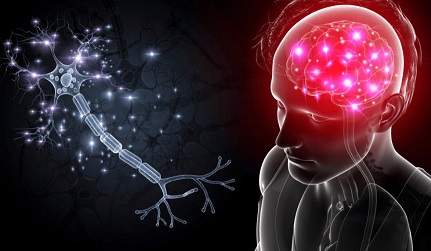Nikhil Prasad Fact checked by:Thailand Medical News Team Jun 23, 2024 1 year, 5 months, 2 weeks, 11 hours, 42 minutes ago
Medical News: Neurons are the nerve cells that transmit signals throughout our body, and their long extensions, called axons, play a crucial role in this process. Damage to these axons, such as from optic nerve injuries or conditions like glaucoma, can lead to vision loss and other severe neurological issues. Recent research highlights promising new methods for promoting axon regeneration, potentially reversing some of this damage.
 New Hope for Nerve Repair - Breakthrough in Axon Regeneration
The Challenge of Normalizing Biological Data
New Hope for Nerve Repair - Breakthrough in Axon Regeneration
The Challenge of Normalizing Biological Data
Scientists studying axon regeneration face a significant challenge: how to compare data accurately across different experiments and conditions. Traditional methods of normalizing data, which ensure consistency and reliability, often fall short when dealing with the vast and complex range of molecules involved in nerve regeneration.
A New Approach: The Concept of Normativity
Researchers from the University of Miami and the University of Texas Southwestern Medical Center have introduced a groundbreaking concept called "normativity." This new method that is covered in this
Medical News report, allows for more accurate comparisons of proteins, lipids, and metabolites involved in axon regeneration. Normativity helps standardize these comparisons, making it easier to understand the biological processes at play.
The Role of Proteins in Regeneration
Proteins are essential to virtually all biological functions, including axon regeneration. The study introduces advanced techniques to normalize protein levels across different experimental models. By using specific peptides (short chains of amino acids), scientists can achieve a more consistent and accurate measurement of protein levels. This new method involves spiking samples with known amounts of these peptides before and after protein extraction, which helps standardize the data.
Applying the Concept to Axon Regeneration
The researchers used axon regeneration models in mice to test their new normalization techniques. They compared various pharmacologically induced models, including those treated with different agents and studied at different time points. By using their new normalization method, they could compare the regeneration process more accurately and identify key proteins involved in nerve repair.
Metabolites and Lipids: Beyond Proteins
While proteins are crucial, other small molecules like metabolites and lipids also play vital roles in axon regeneration. However, these molecules are harder to normalize due to their diverse and dynamic nature. The concept of normativity extends to these molecules, providing a framework for comparing their levels in different biological states. For example, the amount of citrate, a key metabolite, can be normalized against a specific protein, aconitate hydratase, to give a more accurate picture of its role in regeneration. Aconitate hydratase, showed consistent trends across different stages of injury and re
generation, validating their approach.
Insights from Multi-Omics Analysis
The study delves into multi-omics analysis, which combines data from various biological "omes" (such as the genome, proteome, metabolome, and lipidome) to get a comprehensive view of the biological processes. This integrative approach is crucial for understanding complex phenomena like axon regeneration. By standardizing data across these different "omes," scientists can uncover new pathways and molecules that contribute to nerve repair.
Future Directions and Implications
This research opens new avenues for developing therapies to promote axon regeneration. The ability to accurately compare biological data across different models and conditions means that potential treatments can be tested more effectively. This could lead to breakthroughs in treating conditions like glaucoma and other neurodegenerative diseases.
Conclusion: A Step Forward in Neurobiology
The introduction of normativity in multi-omics analysis marks a significant advancement in neurobiology research. By providing a more accurate and standardized way to compare biological data, this approach enhances our understanding of axon regeneration and paves the way for new therapeutic strategies. This research not only brings hope for those affected by nerve damage but also represents a leap forward in the scientific study of the nervous system.
The study findings were published in the peer reviewed journal: Biomolecules.
https://www.mdpi.com/2218-273X/14/7/735
For the latest about Axon Regeneration, keep on logging to Thailand
Medical News.
Read Also:
https://www.thailandmedical.news/news/medical-news-swiss-and-british-scientists-discover-that-axonal-regeneration-and-repair-is-regulated-by-the-circadian-clock
https://www.thailandmedical.news/news/glaucoma-news-pou3f1-identified-as-a-regulator-of-contralateral-retinal-ganglion-cells-transcription-a-breakthrough-in-optic-nerve-regeneration
